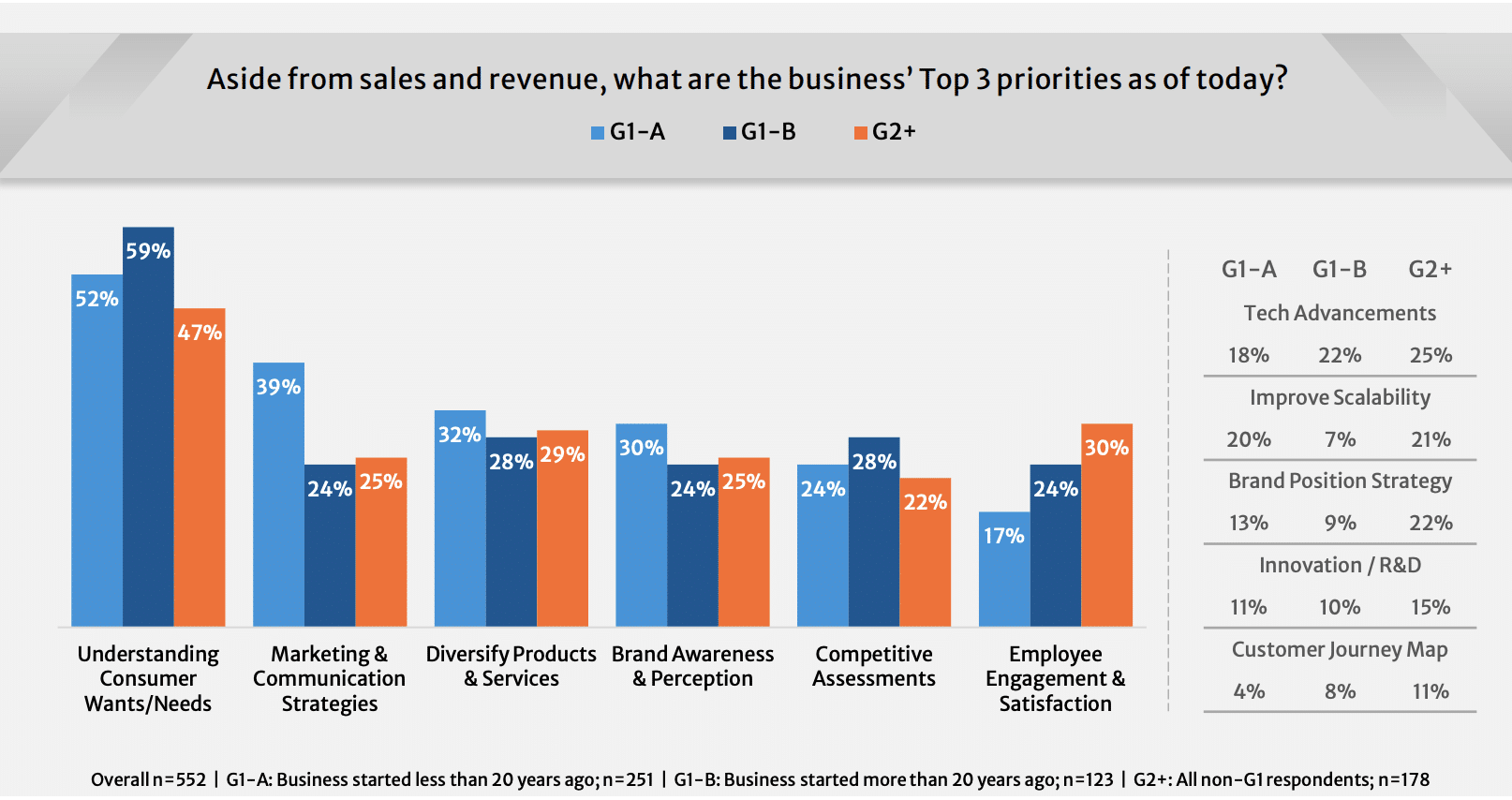According to a 2021 CXPA report1, 67% of customer experience professionals are using Customer Journey Mapping. Of those, 90% have seen increased customer satisfaction and lower churn.
Customer journey mapping is a strategic tool businesses use to understand and visualize the entire end-to-end experience that a customer goes through when interacting with their brand, product, or service. Customer journey mapping aims to gain insights into the customer’s perspective, emotions, and pain points at each stage of their buyer’s journey.
The First Bank Center for Family-Owned Businesses research study found that while “Understanding Customer Wants & Needs” (52%) is the overall top priority for family businesses today, “Customer Journey Mapping” (7%) ranks last on that list.
Since Customer Journey Mapping is a proven way to optimize the impact of consumer demand insights, increasing attention in this area is a significant growth opportunity.

So, why do so many marketing and customer experience professionals avoid Customer Journey Mapping? While customer journey mapping can be a highly valuable tool for improving the customer experience, situations such as a lack of awareness, resource constraints, lack of data, or internal silos may be reasons why some businesses avoid or delay its implementation.
Customer Journey Mapping is an important process in growing a family brand. It can provide new insights to improve the customer experience and make data-driven decisions to enhance customer satisfaction and loyalty.
Key components and steps involved in creating a customer journey map:
- Define the Customer Persona: Identify the target customer or persona for creating the journey map. Understand their demographics, preferences, and behaviors.
- Identify Touchpoints: Identify all the touchpoints where the customer interacts with your brand. This includes online and offline channels such as websites, social media, in-store visits, and customer service calls.
- Map the Customer Journey Stages: Divide the customer journey into stages, which typically include stages like awareness, consideration, purchase, onboarding, usage, and post-purchase support. The number and names of stages may vary depending on the specific context.
- Document Customer Actions: For each stage, document the customer’s actions and behaviors. This might involve researching, comparing options, purchasing, seeking assistance, or providing feedback.
- Capture Customer Emotions: Alongside customer actions, note the emotions and feelings the customer may experience at each stage. This helps in understanding how the customer perceives their journey.
- Identify Pain Points and Opportunities: Highlight the customer’s pain points or challenges during their journey. Also, identify opportunities for improvement or areas where you can delight the customer.
- Gather Data and Feedback: Collect data and feedback from various sources, including surveys, customer interviews, and analytics, to inform your journey map. This ensures that your map is based on real customer experiences.
- Create Visual Representation: Use visual tools like diagrams or infographics to represent the customer journey map visually. Each stage should be clearly labeled, and the customer’s actions, emotions, pain points, and opportunities should be visually depicted.
- Share and Collaborate: Share the customer journey map with relevant teams and stakeholders in your organization, such as marketing, sales, customer support, and product development. Collaboration is essential for implementing improvements.
- Iterate and Improve: Customer journey mapping is an ongoing process. Continuously gather feedback and data, and update the map to reflect changes in customer behavior and business goals.
By creating and using customer journey mapping, family-owned businesses can better understand their customers and align their strategies to meet customer needs, resulting in improved customer retention, increased customer loyalty, and better business outcomes.
*A qualified respondent is currently involved with a family business and is a family member.
Key Findings Report Citations:
1) “What Is A Customer Journey Map And Why Are They Important?”, LinkedIn Blog, 2021








